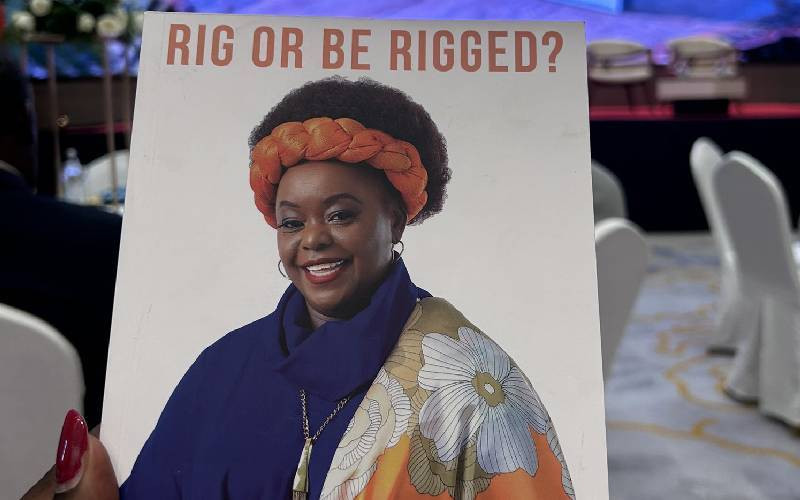By Kenan Miruka and Willis Oketch
An Italian saying goes: To every bird, his own nest is beautiful’. It is the equivalent of ‘There is no place like home’.
Two young Italians visited Kenya, fell in love with the country and adopted it as their second home.
Today, in their 50s and 60s, they say it was the best decision they ever made because they have found peace of mind and been embraced by local communities.
 |
Italian, Mr Michele Capri makes soapstone carvings in Gucha District. [PHOTOS: KENAN MIRUKA AND OMONDI ONYANGO/STANDARD] |
He had a family in Italy, a wife and two sons, but he separated with them. Capri only calls them occasionally.
He first came to Kenya on holiday in 1988 and his first stop was Malindi. After the holiday, several factors made him decide to leave and settle in Gucha.
"Malindi was too hot for me, most people slept until 11am and normal activities began at 5pm. I could not stand it," he says.
That was when he met Mr Paul Mochama, a farmer from Kisii.
Friendship
"The lush vegetation and the friendly reception I got from the people fascinated me," he says.
He moved to Gucha District and began producing soapstone designs for export.
The carvings turned out to be good business in Italy, especially at Christmas.
Stay informed. Subscribe to our newsletter
He has sponsored local sport tournaments and mobilised the community to build Tabaka Boys High School.
Capri is planning a 25,000km walk for peace in trouble spots in Kenya and other parts of Africa in January, next year.
Capri has also taken the fight against HIV/Aids head on and discusses sex issues openly with locals. "I met stiff resistance from the community who were opposed to talking about sexuality across age groups and sexes," he says.
His parting shot: "Kenya, and Gucha in particular, is my second home. I wouldn’t change a thing in my life here. For food, I like traditional vegetables and ugali."
Malindi
On the other side of the country, Mr Armando Tanzini was only 22 when he arrived in Malindi in 1969.
"I had just completed college in Italy when I visited Kenya to explore business opportunities. But my interest was to invest but live in Italy," he recalls.
He adds: "I had no idea that I would settle here. But I knew I would settle in Nairobi, which was expected to grow fast as Kenya had just attained independence."
Tanzini was stunned by Malindi’s natural beauty and rich culture. Today, he has a Kenyan passport and vows Kenya is home where he lives and would die. He speaks flawless Giriama after interacting with the locals for more than 40 years.
"I had not seen such a beautiful town and rich culture though I had travelled a lot as a student," he discloses.
Tanzini, now 65, was one of the first Italians to settle in Malindi, a town that has a population more than 3,000 Italians.
He owns and runs the White Elephant Beach Hotel and other businesses in Malindi.
He first bought a maisonette from then British Minister for Fisheries Tom Alfred for Sh350,000.
Divorced twice, Tanzini lives in a villa on a prime beach plot, overlooking the Vasco Da Gama pillar at Casurina.
What confronts you when you enter his home and hotel are art works of several artists, including his students.
There are numerous sculptures of lions, elephants and other wildlife.
He recounts how he formed a land agency, which sold land and houses in Malindi to fellow Italians.
Rich italians
"I accommodated wealthy Italians, including top government officials. I also became very popular in Italy as the rich scrambled for beach plots with white sand overlooking the blue Indian Ocean waters," Tanzini says.
He has trained more than 200 locals as artists and interior designers. "I designed and built most of the Italian hotels here although I am not an architect," he explains.
Tanzini says the influx of Italian investors in Malindi began in the early 1980s and reached its peak in 1989.
Among them was Franco Roso, the business tycoon who later teamed up with veteran politician Kenneth Matiba to found the famous African Village in Malindi.
 The Standard Group Plc is a
multi-media organization with investments in media platforms spanning newspaper
print operations, television, radio broadcasting, digital and online services. The
Standard Group is recognized as a leading multi-media house in Kenya with a key
influence in matters of national and international interest.
The Standard Group Plc is a
multi-media organization with investments in media platforms spanning newspaper
print operations, television, radio broadcasting, digital and online services. The
Standard Group is recognized as a leading multi-media house in Kenya with a key
influence in matters of national and international interest.
 The Standard Group Plc is a
multi-media organization with investments in media platforms spanning newspaper
print operations, television, radio broadcasting, digital and online services. The
Standard Group is recognized as a leading multi-media house in Kenya with a key
influence in matters of national and international interest.
The Standard Group Plc is a
multi-media organization with investments in media platforms spanning newspaper
print operations, television, radio broadcasting, digital and online services. The
Standard Group is recognized as a leading multi-media house in Kenya with a key
influence in matters of national and international interest.









